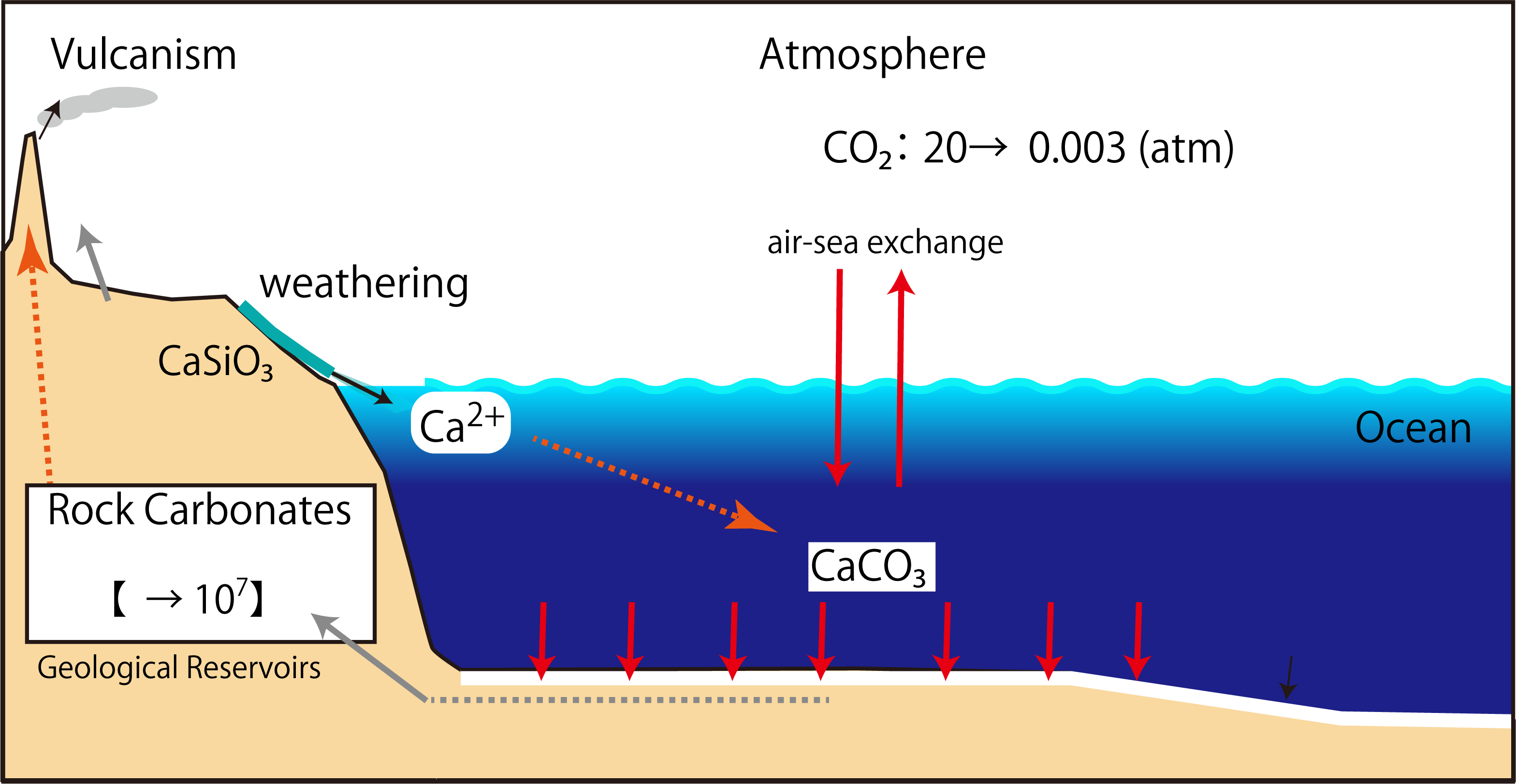History of Global Climate Change and Carbon Budget
Rangkaan topik
-
-
Global climate change is also the history of the carbon budget. In the early days of the Earth's formation, carbon dioxide made up 97% of the atmospheric composition, and the partial pressure of carbon dioxide reached 40 atmospheres. The present Earth's atmosphere has 380 ppm carbon dioxide at 1 atmospheric pressure, so the amount of carbon dioxide in the past was 10,000 times greater than today. The oceans then absorbed the enormous amount of carbon dioxide and sedimented it as limestone, which was sequestered in the earth's crust with the formation of the continents. In the Phanerozoic Era, some organic carbon produced by plants was fixed in the ground as fossils. Recent global warming is attributed to the supply of fossil carbon fixed in the ground to mobile areas on the Earth's surface.
-
The oceans formed within a few hundred million years after the birth of the Earth. The ocean floor was covered with basaltic (CaSiO3), which gradually dissolved to provide Ca2+ to the seawater. Carbon dioxide absorbed into the ocean from the atmosphere reacts with Ca2+ and is accumulated as calcium carbonate particles. This reaction is summarized below.
CaSiO3 + 2CO2 + H2O → CaCO3 + CO2 + H2O + SiO2
-
There is a limit to the amount of carbonate particles that can be retained at the ocean floor. Once the ocean floor is covered with carbonate rocks, it will be difficult for Ca2+ to leach out of basalt, and if the ocean floor moves and burrows into the Earth's interior, carbon dioxide will return to the atmosphere as volcanic gases. Nevertheless, by 3 billion years ago, the atmospheric partial pressure of carbon dioxide had dropped to 20 (atm).

The figure above shows an image of an ocean ridge and subduction into the mantle. This can lead to continental growth. Here, assuming that the continents have grown rapidly since 3 billion years ago, we assume that atmospheric carbon dioxide has been reduced by half just before that time (Reference: TAJIKA Eiichi, The 4.6 Billion Year History of Earth's Environmental Changes).
-
Continental growth began 3 billion years ago and has been gradual up to the present. According to a recent study (Sawada et al., 2018), some authors suggest that the continental area reached about 30% of the surface area 3 billion years ago. As continents grow, calcium carbonate from the ocean floor is incorporated into the continental crust. When basaltic continental crust is exposed at the surface, weathering action rapidly increases the supply of Ca2+ to the oceans. A mechanism was created whereby the oceans absorbed enormous amounts of carbon dioxide, accumulated it as limestone, and sequestered it in the continental crust as the continents grew. Thus, the concentration of atmospheric carbon dioxide is thought to have decreased.

-
Global climate change is also the history of the carbon budget. In the early days of the Earth's formation, carbon dioxide made up 97% of the atmospheric composition, and the partial pressure of carbon dioxide reached 40 atmospheres. The present Earth's atmosphere has 380 ppm carbon dioxide at 1 atmospheric pressure, so the amount of carbon dioxide in the past was 10,000 times greater than today. The oceans then absorbed the enormous amount of carbon dioxide and sedimented it as limestone, which was sequestered in the earth's crust with the formation of the continents. In the Phanerozoic Era, some organic carbon produced by plants was fixed in the ground as fossils. Recent global warming is attributed to the supply of fossil carbon fixed in the ground to mobile areas on the Earth's surface.
-
